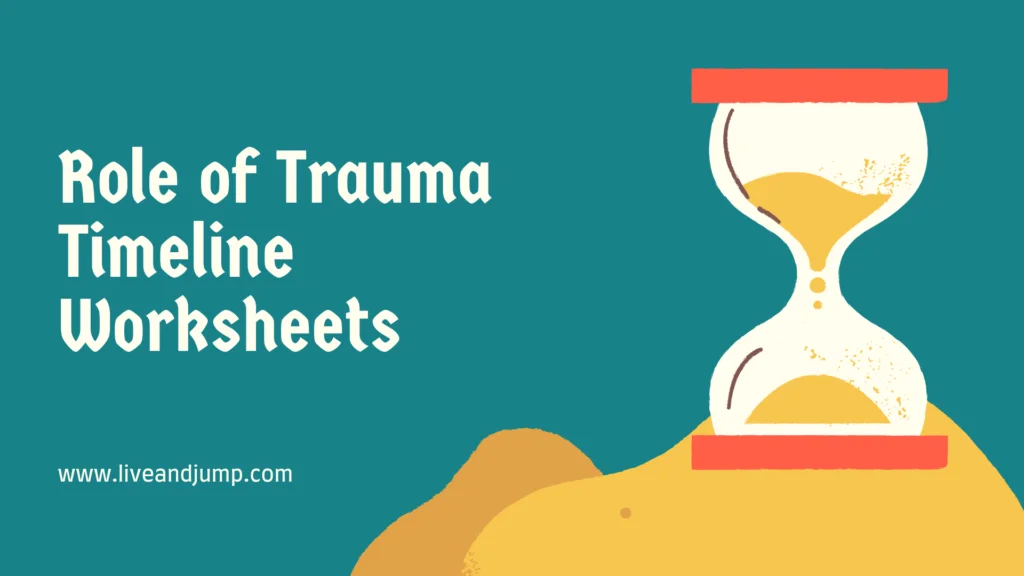Introduction to trauma timeline worksheets:
In the dynamic realm of emergency medicine, time is of the essence, especially when responding to traumatic injuries. First responders and healthcare providers are tasked with swiftly and effectively managing critical situations where every moment counts. In this context, the utilization of tools that streamline patient assessment and treatment processes is paramount. Among these tools, the trauma timeline worksheet emerges as a vital asset, providing a structured framework for documenting and tracking key events throughout the continuum of trauma care.
Read: Unexpected gift of trauma
Understanding the Trauma Timeline Worksheets:
The trauma timeline worksheet serves as a comprehensive document utilized by healthcare providers to chronologically record crucial information related to the assessment, treatment, and management of traumatic injuries. This structured tool is typically divided into sections corresponding to different phases of care, including prehospital, emergency department, and definitive care settings. Within each section, healthcare professionals meticulously document pertinent details such as patient demographics, mechanism of injury, vital signs, interventions performed, and response to treatment. By compiling this information in a systematic manner, the trauma timeline worksheet facilitates efficient communication, decision-making, and continuity of care among multidisciplinary healthcare teams.
Read: Poems about childhood trauma

Key Components of a Trauma Timeline Worksheet:
A well-designed trauma timeline worksheet encompasses several key components essential for comprehensive documentation and patient management:
1. Patient Information: This section captures essential demographic details about the patient, including name, age, sex, and relevant medical history. Additionally, it includes specifics such as the date, time, and location of the injury, as well as the mechanism of injury, providing crucial contextual information for assessing the severity and nature of trauma.
2. Assessment Findings: Healthcare providers meticulously document the patient’s vital signs, Glasgow Coma Scale (GCS) score, and other pertinent assessment findings in this section. These objective measures serve as critical indicators of the patient’s physiological status and aid in guiding subsequent interventions and treatment decisions.
3. Interventions and Treatments: This section outlines the interventions performed by healthcare providers at various stages of care, encompassing prehospital, emergency department, and definitive care settings. Detailed documentation of interventions such as medication administration, airway management, fluid resuscitation, and surgical procedures, along with their timing and response to treatment, allows for a comprehensive overview of the patient’s management trajectory.
4. Imaging and Diagnostic Studies: Healthcare professionals document the results of diagnostic studies, including X-rays, computed tomography (CT) scans, and laboratory tests, in this section. These imaging findings and laboratory values aid in identifying injuries, assessing their severity, and guiding further management decisions throughout the continuum of care.
5. Response to Treatment: Healthcare providers systematically track the patient’s response to interventions and treatments over time, documenting changes in vital signs, clinical status, and laboratory parameters. This ongoing assessment enables providers to evaluate the effectiveness of interventions and adjust the treatment plan accordingly to optimize patient outcomes.
Read: Mental health side effects of social media

Benefits of Utilizing Trauma Timeline Worksheets:
The implementation of trauma timeline worksheets offers numerous benefits for healthcare providers, patients, and healthcare systems:
1. Enhanced Communication: Trauma timeline worksheets serve as standardized documentation tools, facilitating clear and concise communication among members of the healthcare team. By providing a comprehensive overview of the patient’s care trajectory, these worksheets enable effective communication and collaboration among multidisciplinary teams involved in the management of traumatic injuries.
2. Improved Documentation: By offering a structured framework for documenting patient care, trauma timeline worksheets ensure thorough and accurate documentation of key events and interventions. This comprehensive documentation is essential for legal and regulatory compliance, quality assurance, and continuity of care, enhancing patient safety and healthcare delivery.
3. Facilitated Decision-Making: Trauma timeline worksheets enable healthcare providers to track the progression of injuries and responses to treatment over time, allowing for informed decision-making regarding further interventions, referrals, or transfers to higher levels of care. By providing a chronological record of patient care, these worksheets support evidence-based practice and optimize patient outcomes.
4. Quality Improvement Initiatives: The systematic documentation provided by trauma timeline worksheets facilitates quality improvement initiatives within healthcare organizations. By analyzing trends, identifying areas for improvement, and implementing targeted interventions, healthcare systems can enhance the delivery of trauma care, improve patient outcomes, and optimize resource utilization.
Read: Mental toughness challenge
Applications of Trauma Timeline Worksheets:
Trauma timeline worksheets are utilized across various healthcare settings, including:
1. Prehospital Care: Emergency medical services (EMS) personnel utilize trauma timeline worksheets to document patient assessments, interventions, and responses to treatment in the field. This information is transmitted to receiving hospitals to facilitate seamless continuity of care and optimize patient outcomes.
2. Emergency Departments: Healthcare providers in emergency departments utilize trauma timeline worksheets to document the initial assessment, treatment, and disposition of trauma patients. This documentation ensures that important information is captured and communicated effectively to subsequent care providers, facilitating continuity of care and patient safety.
3. Trauma Centers: Trauma centers utilize trauma timeline worksheets to track the care of critically injured patients throughout their hospitalization, from admission to discharge or transfer to rehabilitation facilities. By documenting key events and interventions, these worksheets support multidisciplinary collaboration and ensure that patients receive optimal care throughout their recovery journey.
Conclusion:
Traumatic injuries present unique challenges for healthcare providers, requiring rapid and coordinated interventions to optimize patient outcomes. Trauma timeline worksheets serve as invaluable tools in this process, providing a structured framework for documenting and tracking key events throughout the continuum of trauma care. By facilitating efficient communication, enhancing documentation, and supporting informed decision-making, trauma timeline worksheets help healthcare providers deliver high-quality care to trauma patients across various healthcare settings. As technology and best practices continue to evolve, trauma timeline worksheets will remain essential components of effective trauma care, enabling healthcare teams to work collaboratively towards the shared goal of saving lives and restoring health.

